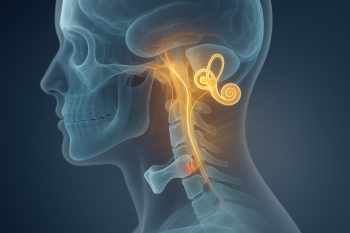
Millions suffer from chronic TMJ (temporomandibular joint) problems throughout the country. There is nothing worse than having your jaw pop and ache so badly that you are unable to eat.
Often times those who suffer from TMJ issues also suffer from vertigo, tinnitus, ear pain, and eustachian tube dysfunction. TMJ is a complex neuromuscular condition that can present itself with a myriad of symptoms.
Conventional dentistry can be successful in its treatment by using splints, correcting bite problems, and in worst cases using surgery. However, this article is geared towards the most common underlying cause of TMJ which is upper cervical spine injury and its subsequent insult to the brainstem and central nervous system.
By downloading the Digital Patient Chart mobile app you can better control your patient portal.
We will discuss what we feel is the most common and least understood causes of TMJ-TMD, offer up a case story, and then discuss what you can do naturally to remove its underlying cause and find lasting relief.
TMJ/TMD and the Upper Cervical Spine
The TMJ is a bilateral hinge joint that fits into both sides of the skull. It is housed by ligaments, soft tissue, and its motion is controlled by a complex network of muscles. Inside of the TMJ is a disc that makes this hinge joint even more complex.
There is a direct interplay between the cervical spine, the nervous system, and the TMJ. The muscles that control the function and position of the TMJ are controlled by the trigeminal nerve, which is the 5th cranial nerve branching off of the brainstem located inside of the first two cervical vertebrae.
Spinal injury resulting from blunt trauma like car accidents, sports injuries, and other trauma can alter the structure of the cervical spine which then can cause irritation to the brainstem and central nervous system.
The muscles of mastication which control the movement of the jaw can become asymmetrically imbalanced due to interference to the trigeminal nerve resulting from the upper necks misalignment and subsequent irritation to the brainstem. There is a direct relationship between TMJ problems and upper cervical spine injury.
Over the past 20 years, our offices have seen over 13000 patients, and out of that group of patients, TMJ problems occur as one of the top 10 most commonly presenting symptoms of our patient demographic. We are happy to report that a large majority of patients that seek upper cervical care do exceedingly well with their TMJ problems after their upper cervical spine is corrected.
One Patients Story in Overcoming TMJ - TMD Naturally with Blair Upper Cervical Care
One of the most memorable TMJ cases to enter our office was a young mom with 4 children. She was suffering from severe TMJ, ear pain, headaches, cognitive problems, and depression. These health problems made raising four kids impossible. As a result, she sank into a deep depression and was unable to function normally.
She had a tremendous amount of guilt because she was not present for her kids and she felt that she was letting her husband down. Thankfully she landed in our office and over time recovered her health. Upper cervical health care offices around the country are known for helping patients when many other mainstream and alternative forms of care have failed.
While upper cervical care is NOT a cure-all it is very effective at helping a broad range of chronic health problems like TMJ and it does so without toxic medications, surgeries, or aggressive manipulative procedures. In fact, the corrections made to the upper cervical spine in our office are often initially dismissed because they are so light and non-invasive.
What Exactly Does a Blair Upper Cervical Chiropractor do? Sarasota Natural TMJ Treatment
Blair Upper Cervical doctors are specially trained to locate spinal misalignments in the upper cervical spine and correct them. Spinal misalignments are located by running a battery of neurological tests that locate the spinal segments that have been injured and misaligned by a prior neck injury.
Once located, precision imaging in the form of digital x-ray or cone-beam computed tomography (Cbct) is used to precisely determine which joint has misaligned and the angulation of the misaligned joint. Each person’s anatomy is different and therefore imaging is used to uncover the blueprint to be used to correct each patient’s individual misalignment pattern.
Once this information is gleaned, a gentle, light correction is made without twisting, popping, or pulling. The patient is then monitored overtime to ensure that the correction is holding. If the testing indicates the need for another correction, then it is performed.
However, the goal of Blair Upper Cervical Care is for the patient to stay in “adjustment”. It isn’t the correction that produces healing. It is the removal of nerve irritation and the adjustment “holding” in its normal position that allows the body to function better and proceed through a healing process.
This is how Blair Chiropractic care can often help remove the underlying cause of many who suffer from migraine, tinnitus, vertigo, Meniere’s disease, neck pain, migraine headaches, and other chronic health problems by supporting the body in healing itself.








Leave a comment